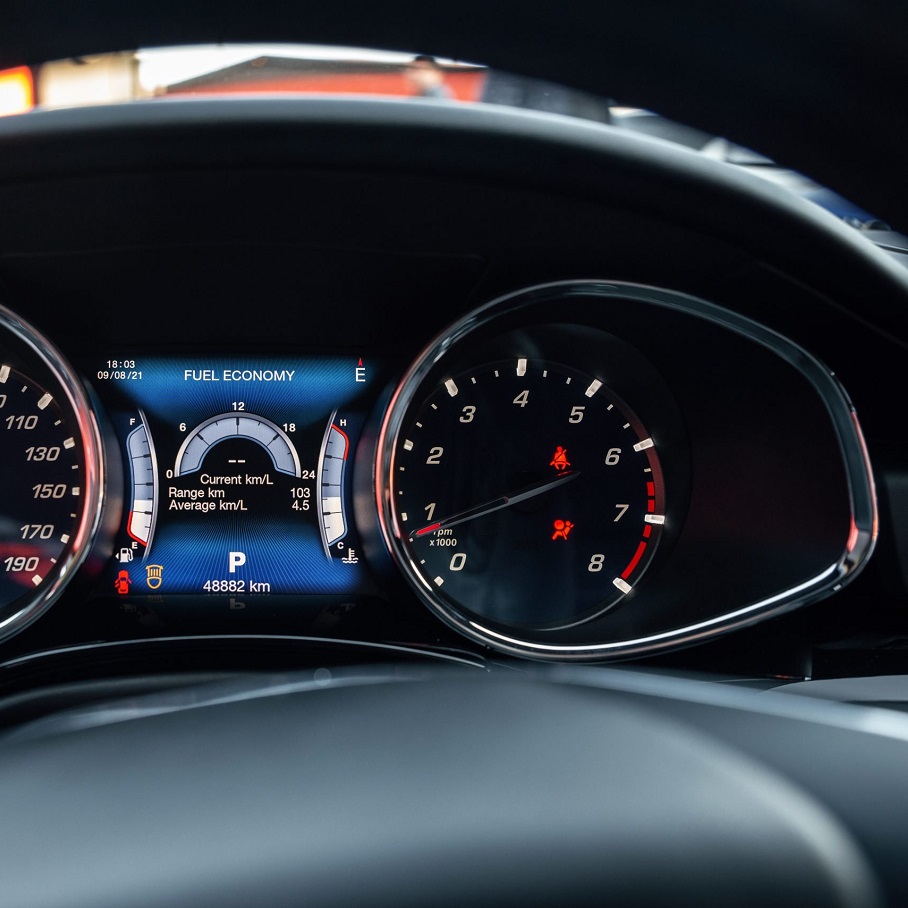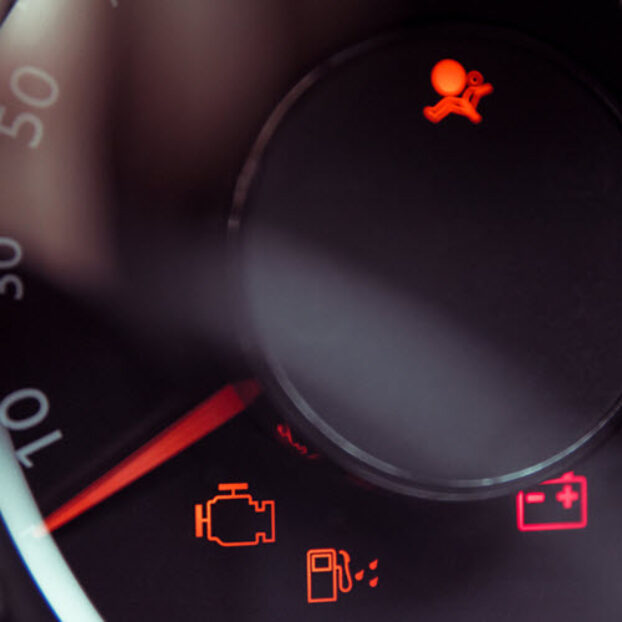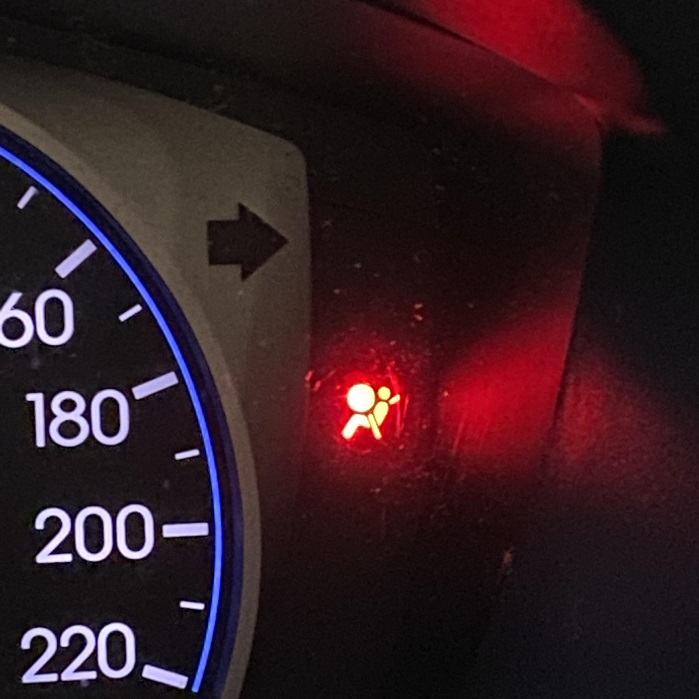What Does the Airbag Light Mean?
The airbag light in your car is a key safety feature. It alerts you to potential issues with your vehicle’s airbag system. When you turn on your car, this light will briefly appear as part of a standard check. If it stays on, something might be wrong. It could mean a number of things. It might be a problem with the airbags themselves, the sensors, or the control module. Airbag light could also indicate a fault in the seatbelt system, which works with airbags to protect you. The light’s purpose is to warn you to address the problem before an accident occurs. If you see the airbag light on, it is crucial to take it seriously. Ensure you check the system or consult a professional to maintain safety on the road.
Common Reasons for Airbag Light Illumination
Several factors can trigger the airbag light in your car. Understanding these can help you pinpoint the issue more quickly.
Faulty Airbag Sensors
Sometimes, the sensors that detect collisions can falter. This can cause the airbag light to turn on. Typically, this is due to a collision that was minor and did not deploy the airbags, or it could be due to environmental factors, such as moisture or extreme temperatures, which can affect sensor performance.
Low Battery Voltage
If your car’s battery is weak or dying, the airbag light may illuminate. The system needs sufficient power to function correctly. A low battery can’t provide that, leading to a warning on your dashboard.
Airbag Module Issues
The airbag module controls the airbags’ deployment. Problems here can include water damage or a previous accident’s lingering effects. When the module doesn’t communicate properly with the system, the airbag light will come on.
Disconnected Wires
Under your seats are wiring harnesses for the airbag system. If these become disconnected due to moving the seats or objects lodged underneath, it can trigger the light.
Worn Out Airbag Components
Airbags have components that can wear out over time. It’s not common, but a worn component could cause the system to fail, resulting in an illuminated airbag light.
Remember, an illuminated airbag light in your car is a safety alert. It’s best to get it checked by a professional to ensure you stay safe on the road.
Steps to Safely Check Your Airbag System
When the airbag light in your car turns on, perform an initial check carefully. To start, ensure your car is turned off and parked on a level surface. Remove the ignition key, wait for at least 15 minutes before proceeding. This wait allows the airbag system’s capacitor to discharge fully, reducing the risk of accidental deployment.
Now you can check the car’s interior. Look under the seats for any displaced objects that might interfere with wiring. If you find any, remove them carefully. Next, inspect the condition of the wires and connectors for any obvious damage or disconnections. Reconnecting them may solve the problem.
Another step is checking the battery voltage. Use a voltmeter to ensure the battery maintains a healthy charge. Low voltage may cause the system to send false alerts. If the voltage is low, consider a professional battery test or replacement.
Finally, consult the car’s manual for manufacturer-specific instructions or warnings. It can offer helpful guidance on what to check for your particular vehicle. Remember, if you feel unsure at any point, seek help from a professional mechanic. They can ensure safety and proper diagnosis of airbag light issues.
Diagnosing Airbag Light Warning with On-Board Diagnostics (OBD)
When the airbag light in your car stays lit, it’s essential to diagnose it correctly. Using On-Board Diagnostics (OBD) is one effective method. Most modern cars come equipped with this system. It constantly monitors various vehicle functions, including the airbag system.
To begin the diagnosis, you first need an OBD scanner. This tool connects to your car’s OBD port, usually found under the dashboard. Once connected, it reads diagnostic trouble codes (DTCs) from the car’s computer system. These codes can specify what triggered the airbag light.
Here’s a step-by-step guide to using an OBD scanner:
- Turn off your car and plug in the OBD scanner.
- Turn on the ignition so the dashboard lights up, but don’t start the engine.
- Let the scanner read the system. It may take a few minutes to display the codes.
- Note down the codes displayed. Each code has a specific meaning that can point to the exact issue.
Once you have the codes, refer to your car’s service manual or an online database to find out what each one means. Common issues might be related to sensor problems, low battery voltage, or faults in the airbag module.
Remember, while an OBD scanner can provide valuable insights, some airbag system issues might still require professional attention. It’s a good idea to consult with a mechanic if the problem seems complex.
How to Reset Your Car’s Airbag Light
Resetting the airbag light in your car may seem daunting, but it can often be done with a few simple steps. However, it’s crucial to remember that if the light comes on, there’s usually an underlying issue that needs attention. Resetting the light without addressing the problem can lead to unsafe driving conditions. With that said, let’s go over how to reset the airbag light once any issues have been resolved.
Check the error codes first. It’s important to diagnose the issue using an OBD scanner, as detailed in the previous section. Once you’ve fixed the underlying problem, clearing the codes may reset the light.
Turn the ignition on and off. Sometimes, switching the ignition on and off can reset the car’s computer system and the light. Do this several times, leaving a few seconds between each cycle.
Check the fuse. If the airbag light is still on, check the fuse for the airbag system. A blown fuse might be the cause. Replace it with a new one if necessary.
Disconnect the battery. Another method is disconnecting the car battery for a few minutes. This can reset the car’s computer systems, potentially clearing any lingering errors. Make sure the ignition is off and you wait 15 minutes after the last engine run.
Remember, these steps are general and might not apply to all car models. Always refer to the car’s manual for the recommended procedure. If the light remains on after trying these steps, or if you are uncertain about any part of the process, seek help from a professional mechanic. They can ensure the airbag system is functioning correctly and reset the light safely. Safety is paramount, and when it comes to airbag issues, it’s better to be cautious and consult with experts.
The Role of a Professional Mechanic in Airbag Issues
When dealing with airbag light issues in a car, a professional mechanic plays a crucial role. They have the tools and expertise needed to diagnose and fix issues correctly. Here are key reasons why you should consider using a professional mechanic:
- Expert Diagnosis: Mechanics have the training to understand complex car systems, including airbags. They use advanced diagnostic tools that can quickly pinpoint problems.
- Proper Tools and Equipment: Professionals have access to specialized tools required for safe and effective repairs. These tools ensure that the airbag system is handled correctly.
- Experience: Mechanics often have years of experience in dealing with a variety of car problems. This experience allows them to solve airbag issues more efficiently.
- Safety: Working on a car’s airbag system can be dangerous. A mistake might deploy the airbag unintentionally. Mechanics know how to avoid such risks. They ensure safety for everyone involved.
- Warranty and Liability: When a professional fixes your airbag light issue, their work often includes a warranty. This protects you if the problem resurfaces.
Always ensure to communicate clearly with your mechanic about the issues experienced. Understanding the problem from a driver’s perspective can help them address the issue more accurately. If the airbag light in your car turns on, considering a professional mechanic is a wise choice. They ensure your car remains safe and compliant with road safety standards.
Airbag Light and Vehicle Safety: What You Need to Know
The airbag light in your car is not just a simple indicator. It’s a critical part of your vehicle’s safety system. Here’s what you need to know about it:
- Early Warning System: The airbag light acts as an early warning. It signals potential issues with the airbag system. Taking action as soon as the light comes on can prevent further problems.
- Indication of Malfunction: If the light stays on after starting the car, it’s a sign. It means there might be a fault in the system. This could affect the airbags’ performance in a crash.
- Safety Compromise: Driving with the airbag light on can be risky. It may mean the airbags won’t deploy in an accident, leaving you unprotected.
- Legal and Insurance Implications: Ignoring the light can have legal consequences. It can also affect insurance claims after an accident if the airbags fail to deploy.
Understanding the importance of the airbag light helps keep you safe. It ensures your car’s safety features work when you need them most. Be sure to address any issues immediately to maintain your vehicle’s safety integrity.
Preventative Measures to Avoid Airbag Light Problems
To minimize the chances of facing issues with the airbag light in your car, consider adopting some preventative measures. Keeping ahead of potential problems can save you from hassle and ensure your safety. Here are a few proactive steps to consider:
- Regular Vehicle Maintenance: Routine check-ups help identify and fix minor problems before they become major. Make sure your vehicle’s airbag system is part of the routine checks.
- Battery Checks and Maintenance: Since a low battery can trigger the airbag light, ensure your car’s battery is in good condition. Regularly test the battery’s voltage and replace it if necessary.
- Avoid Moisture and Heat: Protect your car’s airbag sensors by avoiding excessive moisture and heat which can compromise sensor functionality.
- Keep the Car Clean: Ensure the area under and around the seats is free from debris. Objects can dislodge or damage the wiring connected to the airbag system.
- Be Cautious with DIY Fixes: If you are not knowledgeable about car repairs, it’s best to avoid DIY fixes on airbag systems. Mistakes can lead to further complications or unintended airbag deployment.
- Regular Scanner Checks: Use an OBD scanner periodically to check for any fault codes that might indicate a problem with the airbag system. Address these codes promptly.
By following these tips, you can help ensure that the airbag light in your car functions correctly and only illuminates when there is a genuine issue. Always prioritize safety and consult with a professional mechanic if you are unsure about any signs your car displays. Keeping up with maintenance not only helps avoid airbag light problems but also contributes to the overall well-being of your vehicle.



